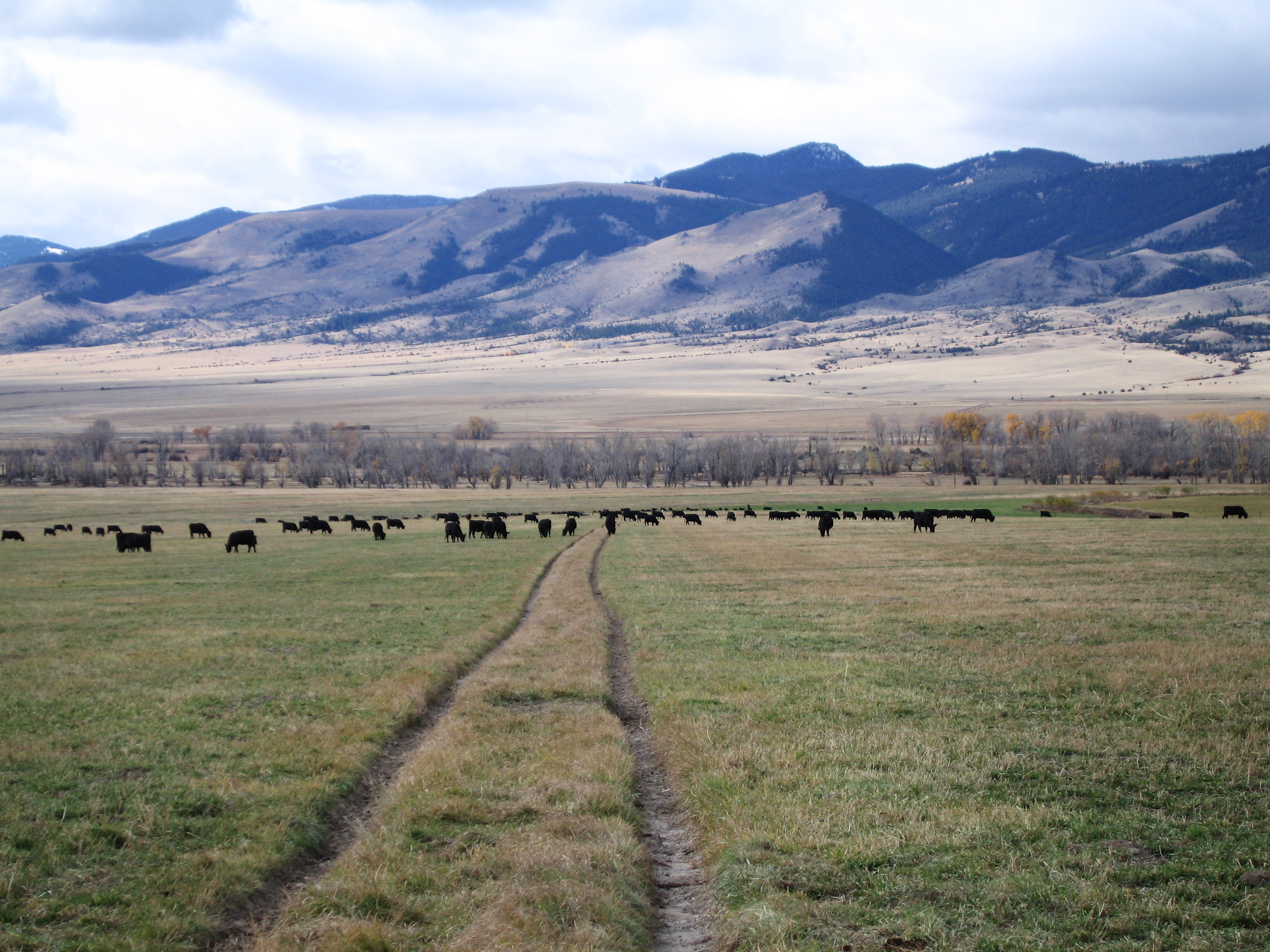The Benefits of Grass-Fed Beef, Part 2: Environmental Focus

Imagine this … cows are given free rein to roam the land, gently munching on grass and plants as they saunter along with their buddies and children, enjoying the fresh air, learning every inch of the land they’re raised on while peacefully minding their own business.
What don’t you see in this mental picture? Crowded feedlots made of cement and steel, fossil-fuel guzzling heavy equipment, altered landscapes where sloping hills and ponds once stood that are now occupied by leveled ground and multiple structures, tanks of fertilizer or weed killers to keep specific crops only growing while shunning native flora…
Quite a stark contrast, isn’t it?
David Pimentell, a Cornell University ecologist, says “The corn we feed our feedlot (“traditionally raised”) cattle requires a surprising amount of fossil fuel energy. Growing the corn used to feed the livestock in this country takes vast quantities of chemical fertilizer, which in turn takes vast quantities of oil. Because of this dependence on petroleum, the average steer will in effect consume 284 gallons of oil in his lifetime.” 284 gallons per cow, folks. As a human, it’s hard to imagine consuming one drop of gasoline or oil, much less 284 GALLONS.
Water pollution is also of major concern in the cattle-raising industry. News21 highlights how traditional feedlots are considerable offenders for water quality issues. Everything from the unabsorbed fertilizer sprinkled over the crops which will eventually feed the cattle, to processed liquid manure fertilizer that seeps into the groundwater later finding its way into the drinking water supply, to surface water contamination after a heavy rainstorm washes away fertilizer chemicals into nearby lakes, rivers, and ponds … all of these contributing factors are extremely difficult to manage for feedlot-raised cattle farmers.
On the other hand, grass-fed ranches tend to fence cattle away from free-flowing water sources like streams, rivers, and ponds in an attempt to keep the surface water free from contamination. Doing so allows the vital nutrients found in cattle manure to spread naturally over the grazing fields, naturally encouraging future grasses to grow. Many grass-fed beef ranches also utilize grazing management, or keeping the cows eating in a certain area for a specific amount of time, allowing grasses to grow and prosper in other areas. They also hand-seed areas that have become chewed-down by cattle, thereby eliminating soil erosion and improving organic matter within and the fertility of the soil.
While it’s difficult to specifically quantify how many grass-fed beef ranches have contributed to positive environmental impacts, what isn’t hard to deny is how each of those establishments carry a minimalistic approach to raising their cattle, using less heavy equipment, decreased fossil fuels, and fewer negative impacts to the land we all need so badly to keep manageable and sustainable for generations to come.